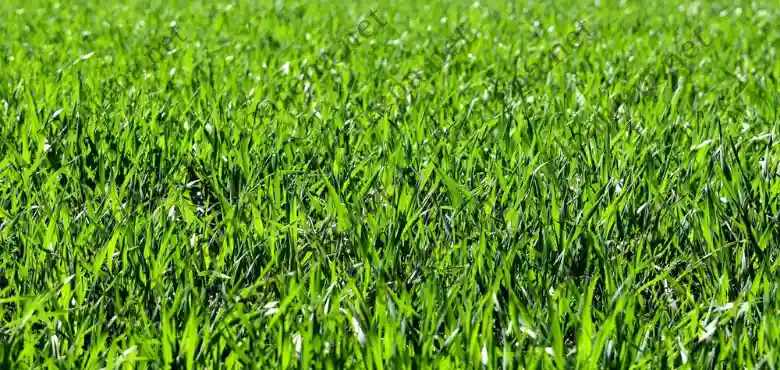A well-kept turf yard is the hallmark of a beautiful home landscape-providing a plush, green canvas for outdoor activities and boosting curb appeal.
Whether you’re a weekend warrior or a turf enthusiast, achieving and maintaining a lush lawn requires attention to detail and consistent care. In this article, we will walk through some fundamental tips and tricks to keep your turf in tip-top shape.
Choose the Right Grass
Selecting an appropriate species of turfgrass is contingent upon a multitude of factors including, but not limited to, climatic conditions, soil type, and the intended usage of the lawn. One should deliberate the choice between cool-season grasses, which flourish in northern climates with significant temperature fluctuations, and warm-season grasses optimized for heat resilience customary to southern regions.
It is incumbent upon the cultivator to conduct a thorough analysis of their regional environmental conditions and select a grass type accordingly to ensure vigorous growth and sustainability.
Soil Health
For a lawn that looks awesome, you have to check the dirt. Good soil is like a comfy bed for grass – it needs to be just right. Make sure it’s not too hard and has the right kind of food for the grass, like when you use fertilizer.
If the dirt isn’t healthy, the grass maintenance won’t be happy, and you’ll be able to tell because it won’t look nice and green. If you want a yard that makes your neighbors say “Wow,” start with making sure your soil is up to snuff.
Watering Wisely
Alright, so you want to have the grass that’s the talk of the block? Get smart with your watering game. Lawns are thirsty, but you have to give them a drink the right way. Don’t just spray water any old time.
Early morning is your golden hour for watering – less wind, cool air, and the sun will help dry things off so your grass doesn’t get sick with too much wetness.
And don’t go overboard, either; too much H2O drowns the roots, and your green carpet goes brown. Figure out how much your grass type digs water, and stick to a plan. It’s like cooking – the right ingredients, the right time, and boom! You’ve got yourself a slice of turf heaven.
Fertilizing for Nutrition
Fertilize at key times of the year to provide necessary nutrients. Slow-release fertilizers feed your grass gradually and are less likely to burn the lawn than fast-release ones. Be careful not to over-fertilize, as this can lead to lush growth that’s susceptible to pests and diseases.
It’s essential to understand the nutritional needs of your specific grass species and follow recommended guidelines for fertilization to promote healthy growth and maintain a vibrant green color.
Mowing Matters
Mow at the correct height for your specific type of grass-cutting too short can stress the grass while leaving it too long can encourage pests. Keep your mower blades sharp to ensure clean cuts and avoid tearing the grass, which can lead to disease.
It’s also crucial to mow at the right time of day, typically early morning or late afternoon when temperatures are cooler. This will help prevent heat stress on the grass and conserve moisture.
Controlling Weeds and Pests
Stay on top of weeds by maintaining a thick, healthy lawn that leaves no room for weeds to establish. Employ pre-emergent herbicides to prevent weed prevention from sprouting and spot-treat with post-emergent herbicides as needed.
For pests, use appropriate insecticides and follow integrated pest management practices. Regularly monitoring your lawn for signs of pests and taking swift action can help prevent costly damage to your turf.
Aeration and Over seeding
Aerate your lawn annually to alleviate soil compaction. This allows water, air, and nutrients to penetrate more efficiently to the grassroots. For cool-season grasses, overseed in the fall to fill in any bare spots and improve turf density.
Warm-season grasses can be overseeded in the spring for the same benefits. By regularly aerating and overseeding, you can promote healthier grass growth and maintain a consistent green lawn.
Dethatching
Thatch is a layer of dead grass and roots that can build up on the soil surface. If it becomes too thick, it can prevent water and nutrients from reaching the soil.
Dethatch your lawn as needed to keep this layer under half an inch. If it exceeds this depth, use a vertical mower to remove the thatch. However, be careful not to damage the grassroots.
Fake Grass Installation
Fake grass instillation is, like, a super chill option for folks who don’t have the time or desire to deal with the whole maintenance shindig of a real turf yard. It’s all about ditching the mowing, no need to water or fertilize, and saying goodbye to pesky weeds and pests.
When you want to get fake grass, you first have to prep the area – rip out any of the old grass and level the dirt, sort of like setting the stage. Then, you roll out that synthetic turf like a big ol’ carpet, making sure it fits snug and looks neat.
Pin it down, brush up the fibers so they look like real grass, and boom, you got yourself a forever green lawn that’s all play and no work!
Seasonal Care
Adjust your lawn care practices with the changing seasons. In spring, focus on fertilization and pre-emergent weed control. During summer, prioritize proper watering and mowing. Fall is for aeration, overseeding, and potentially another round of fertilization.
Finally, winter care is all about minimizing traffic on the turf to prevent damage. Stay in tune with your lawn’s needs and make adjustments accordingly for a healthy, vibrant yard year-round.
Learn All about Turf Yard
So, there you go – the down and dirty on keeping your turf yard looking top-notch. Remember, keep it simple: good grass, good soil, right water, and don’t forget to feed and groom that lawn.
Watch out for those weeds and bugs, give it some air and fresh seed when it needs it, and if you’re not about that life, fake it ’til you make it with synthetic. Whatever the season throws at you, you got this! Just stick to the game plan, and your turf will be the envy of the block. Peace out!
Did you find this article helpful? Check out the rest of our blog.






